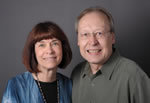By Sallie Hood and Ron Sakal

In the film “An Inconvenient Truth,” Al Gore urged Americans to drive less, but he failed to mention how the places we live in are designed to keep us behind the wheel. Outside of campus, most of us have to drive in order to do much of anything, no matter how high gas prices go.
We need to recognize and change these patterns so we can live better while using less energy. Alternative fuels may help, but in the long run, good urban design is more sustainable—and more healthy and fun. Everyone should be able to live in places that offer inviting options to walk to work, school, church, and a variety of errands and entertainment.
The Center for Building Communities (CBC) in the School of Architecture (buildingcommunities.nd.edu) is dedicated to changing urban design patterns by redeveloping existing communities to make them pedestrian-friendly. Among other things, that involves reclaiming surface parking lots for higher, better, and more beautiful uses (while putting necessary parking into structures and underground); allowing apartments over stores; and redesigning streets.
The process of changing urban design involves learning from the past. As Michael Lykoudis, Dean of the School of Architecture, said earlier this year in Traditional Building magazine, “When we select knowledge from history, we can be eclectic; it’s all there for us to put together in synthesis for the best possible outcome.” (http://www.traditional-building.com/FebRoundtable08_pg1.html)
Changing urban design also involves working with other disciplines to keep up with the latest approaches, as we have done at Notre Dame with graphic and industrial design and with civil engineering. Students in the CBC have experienced wide-ranging collaboration in a variety of places—from Benton Harbor, Michigan, to the 90-block downtown Los Angeles Fashion District, to the western edge of this campus.
Urban design isn’t the only kind of pattern that needs to change: Underfunding of mass transit is also an issue right here in South Bend. Ironically, when we first came to teach here as visitors, we had to buy a car to travel from Chicago because the weekday South Shore train schedule is incompatible with a Notre Dame teaching schedule.
We can all work at conserving energy in our daily lives, but we shouldn’t lose sight of the often invisible patterns that need changing as well.
Sallie Hood and Ron Sakal are associate professor and professional specialist, respectively, in Notre Dame’s School of Architecture. Sakal is the executive director of the Center for Building Communities, and Hood is the director of design. They are principals in Sakal & Hood Architecture and Urban Design.
_This article is part of a 10-day series titled _Perspectives on Sustainable Energy. Subscribe here for updates.
